From magnificent unique pieces from the Belle Époque to everyday tableware: porcelain from Limoges is considered the epitome of French table culture. It has been protected as intangible cultural heritage and a geographical indication of origin since 2008. Limoges also holds the title of UNESCO Creative City for Craftsmanship. The fragile cultural heritage can be discovered on a tour of the city – without visiting a museum, simply by observing the public spaces. Objects of art, fountains and even park benches made of porcelain adorn the city. You just have to know where to find the so-called white gold!
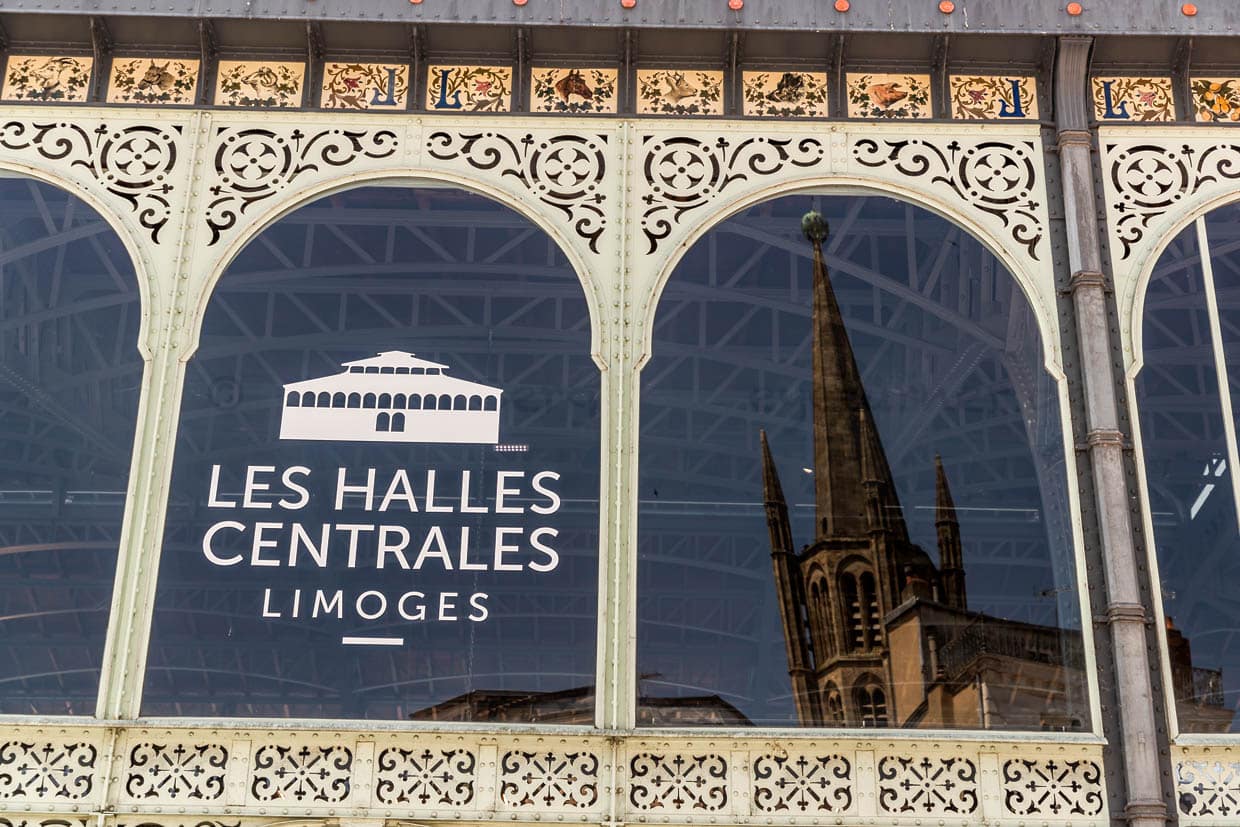
The market hall – porcelain inside and out
The market hall of Limoges, Les Halles Centrales, has been a listed building since 1976 and fascinates with a surrounding porcelain frieze made of 328 tiles. It shows flowers, birds, animals and market hall products. Originally Gustave Eiffel was to design the hall, but the architects Pesce and Lévesque eventually took over the building, which was constructed between 1885 and 1889 – with the steel construction typical of Eiffel. Porcelain adorns not only the façade, but also the interior of the hall
In 2015, the interior was modernized without losing its historical charm. A three-storey chandelier made of porcelain ladles, designed by the renowned Atelier Bernardaud, hangs from the ceiling. The market stalls offer regional specialties such as the typical Limoges tourtes, hearty potato pies. There are numerous restaurants around the market hall and in the nearby butchers’ quarter, which are open for lunch and dinner. Lunch at the Bistrot d’Olivier is particularly popular. Here Chef Olivier Frugier cooks the way his grandmother used to!
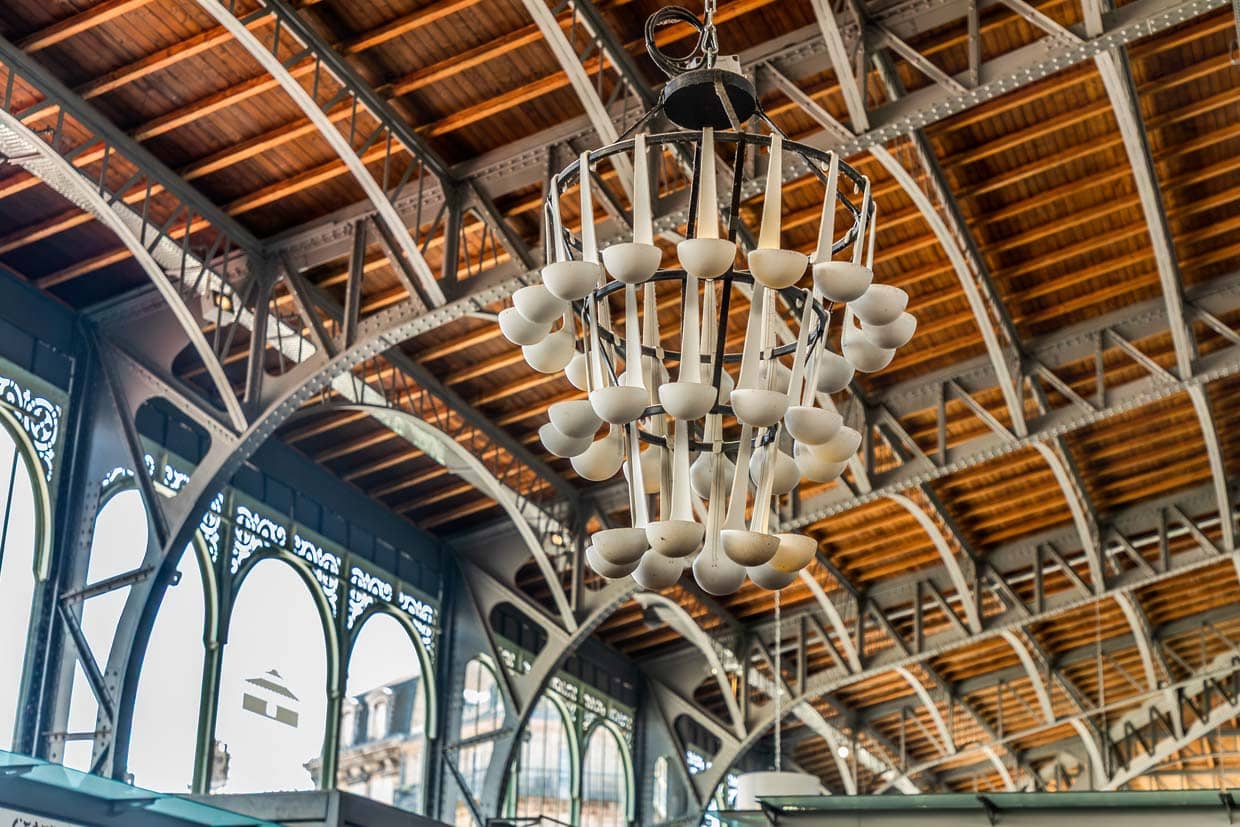
Porcelain Boulevard Louis Blanc
The Boulevard Louis Blanc is considered the Champs-Élysées of porcelain shops. At the end of the 19th century, porcelain stores were lined up close together here. Even today, enthusiasts can find up to a dozen specialist stores and outlets of renowned manufacturers such as Bernardaud, Haviland or Royal Limoges. Many facades and fountains are adorned with porcelain and enamel elements. However, as elsewhere, some traditional galleries and craft stores have had to close in recent years – demand has fallen. Nevertheless, they still exist: small boutiques and specialty stores.
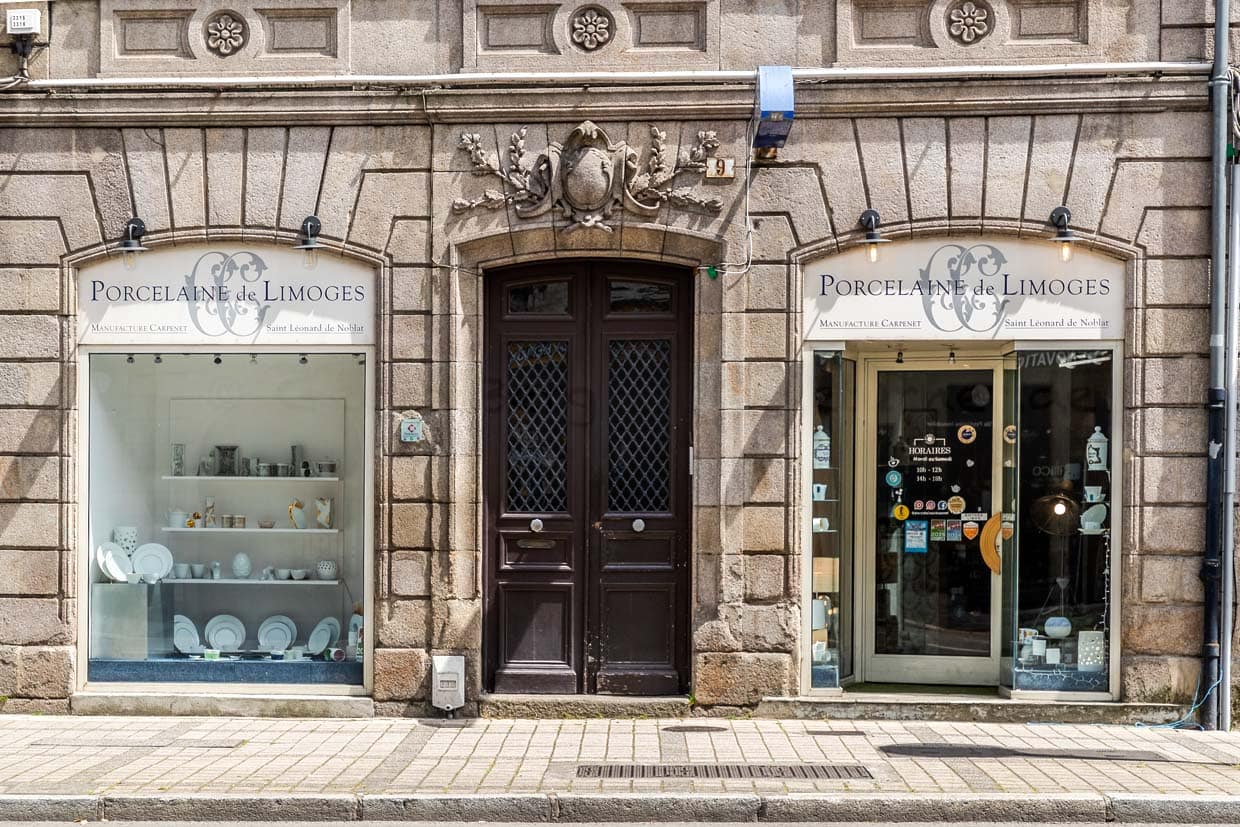
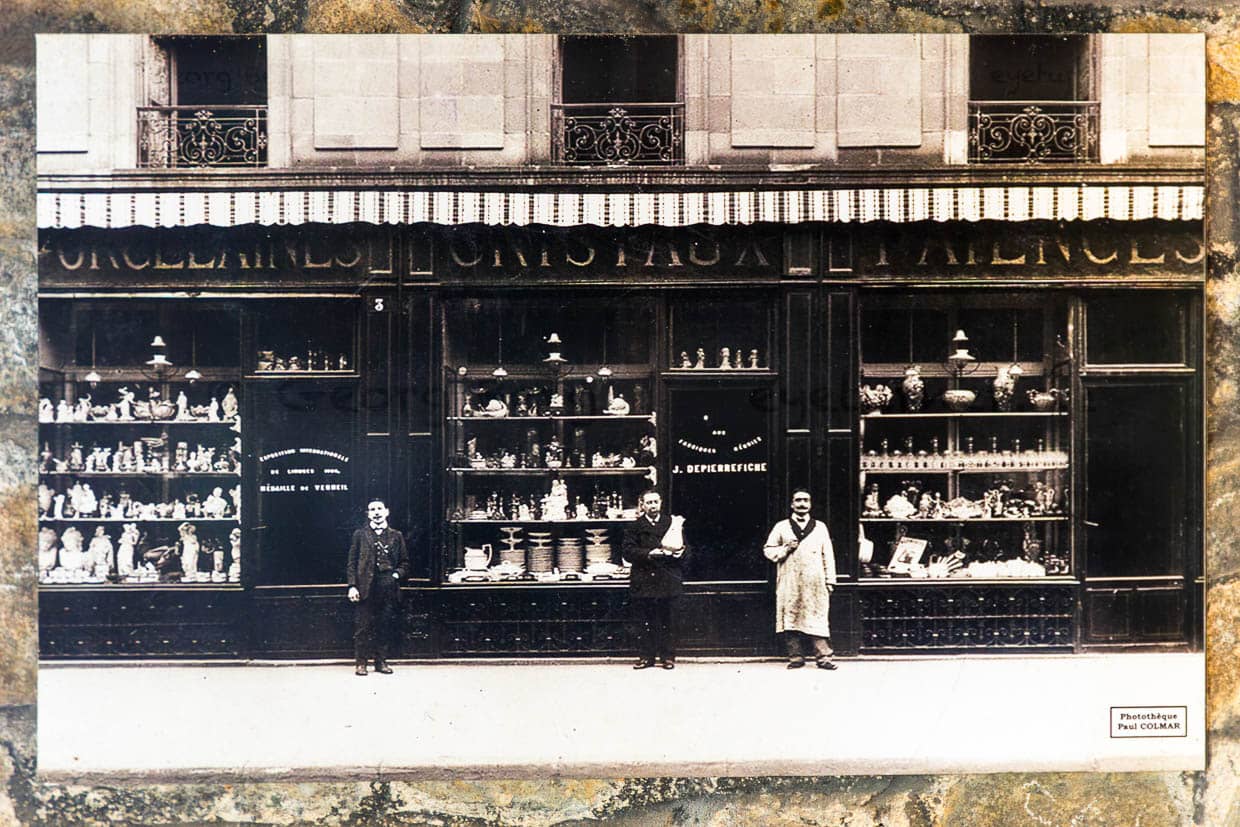
Enamel also has a long tradition in Limoges. As early as the 12th century, the city developed into an important center for the art of enameling. To this day, Limoges enamel stands for artistically painted objects made of copper or metal, which are coated with colored enamel and fired several times.

Porcelain splendor at the town hall
The town hall of Limoges impresses with its elegant façade, which features a large clock and four portraits of important personalities immortalized in limestone. Porcelain artists decorated the building, which is considered an architectural highlight and symbol of the porcelain capital. It stands on the site of the ancient forum and reflects Parisian town hall architecture. It was built in 1892-1893.
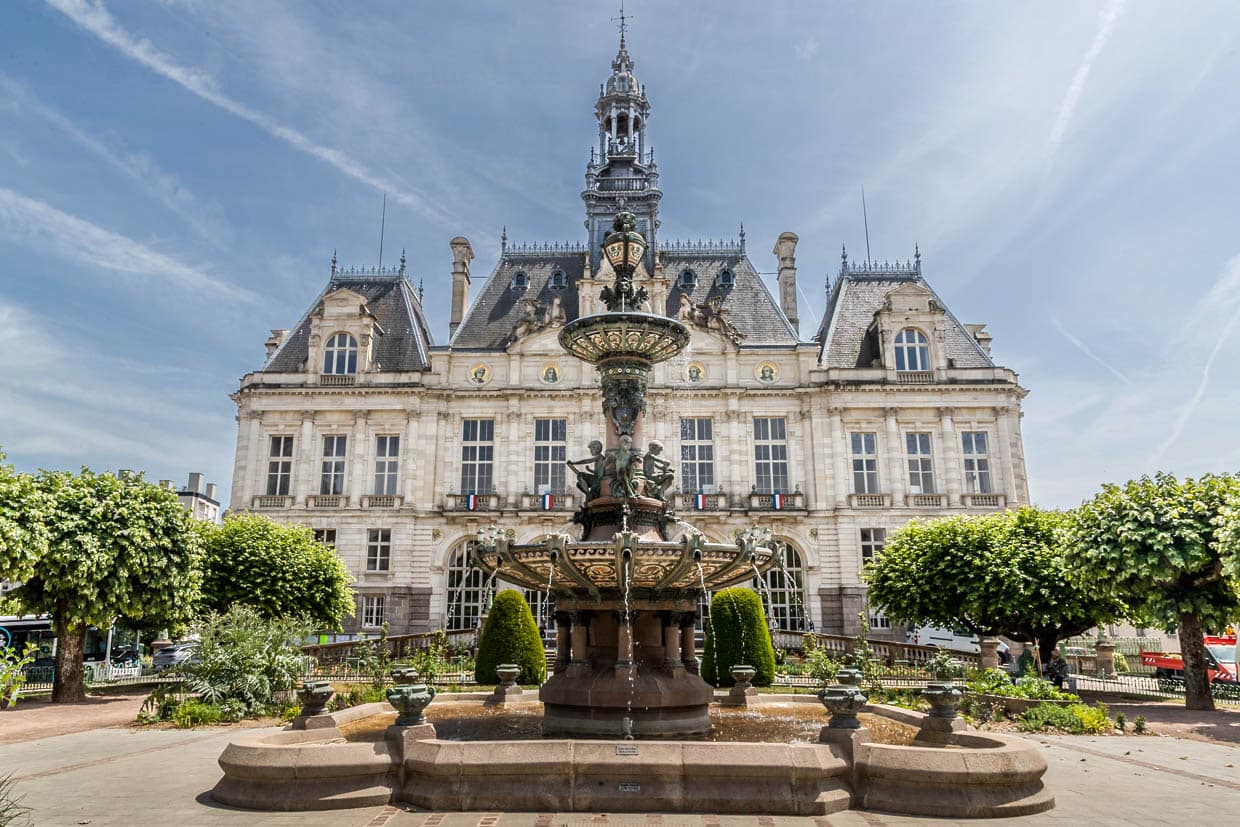
The large fountain in front shows four boys who embody the phases of porcelain production: drawing, molding, sculpting and decorating. A large basin and additional porcelain basins, made by the Guérin manufactory, complete the magnificent ensemble.
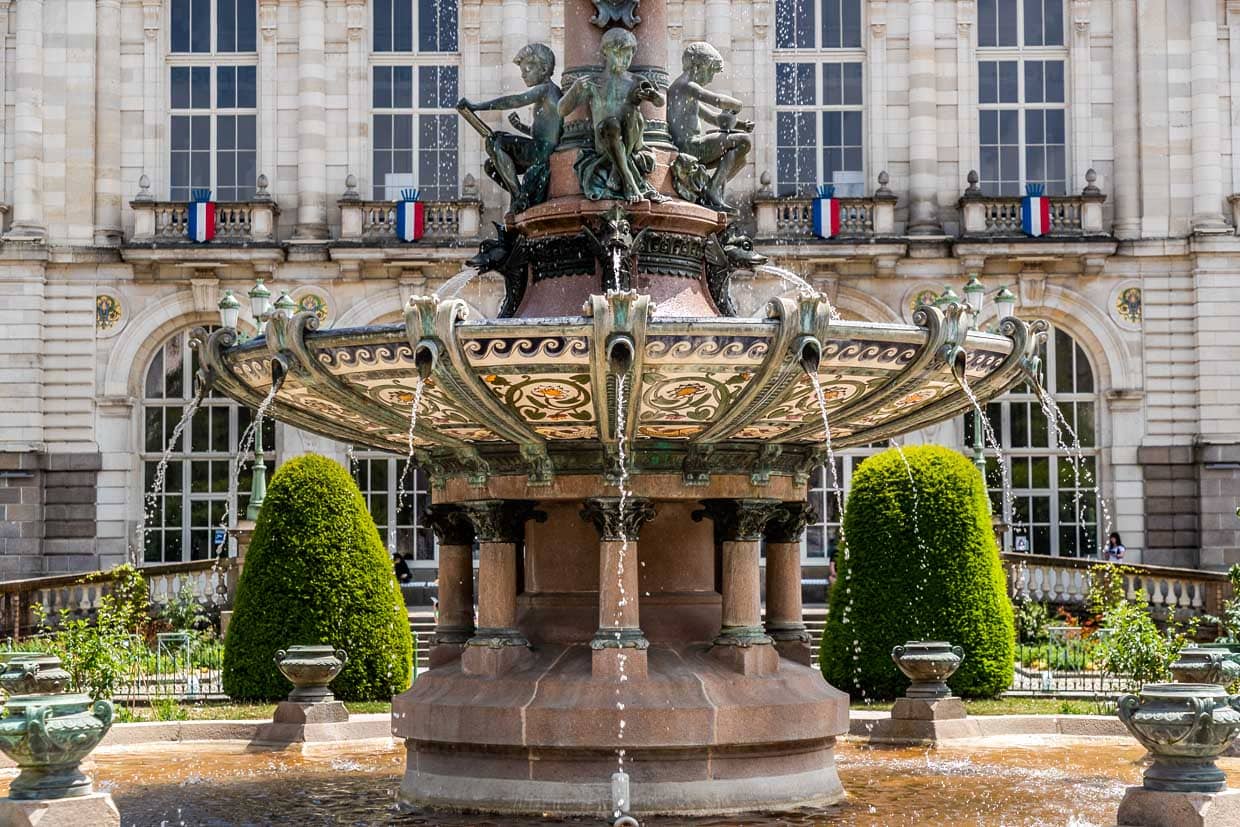
In front of the town hall is a small park with seating. Several benches and tables with inset chessboards are made of porcelain. They were created through a collaboration between the Ateliers Arquié manufactory and the designer Marc Aurel. The porcelain furniture is part of a contemporary art installation called URBACER porcelain furniture, which is exhibited in public spaces. Porcelain and enamel sculptures can also be discovered in the Parc de l’Évêché.
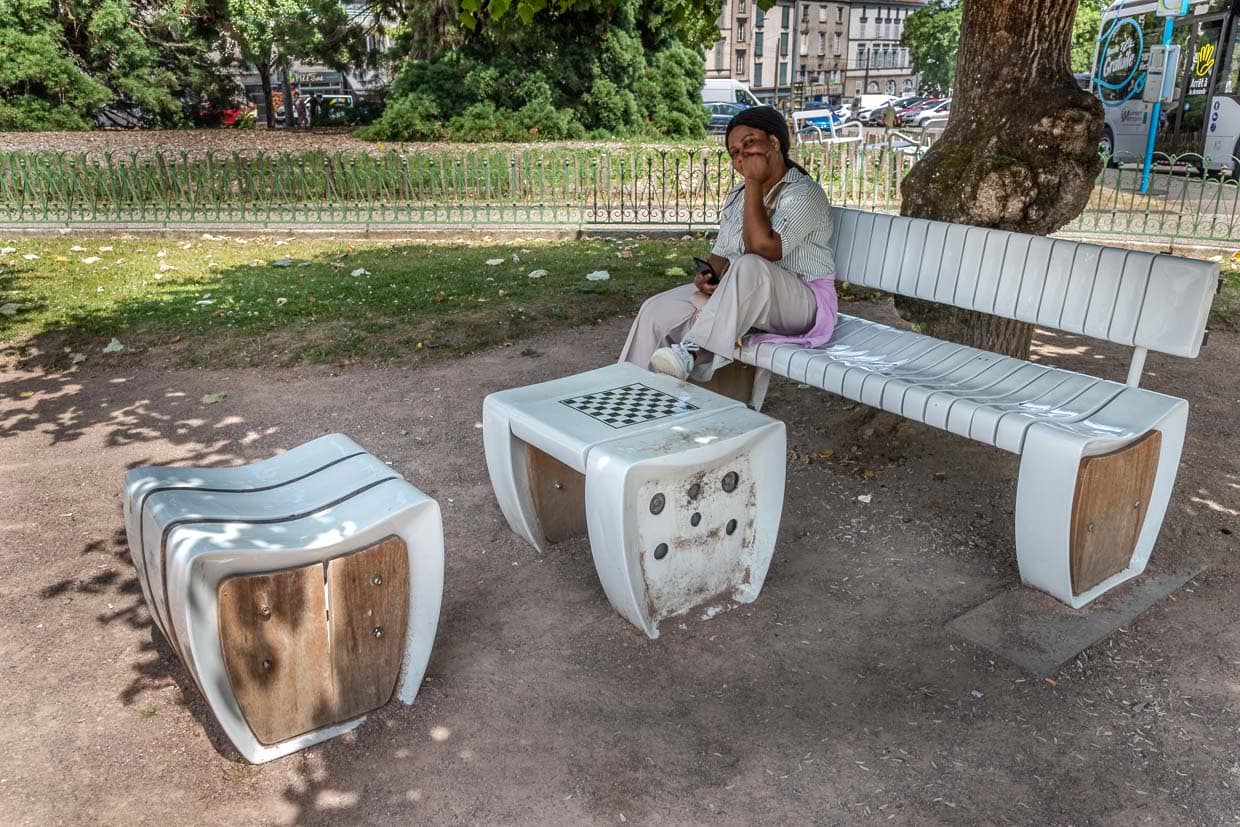
The butcher’s quarter and the baby Jesus
The small Chapel of Saint Aurélien is located in the heart of the popular butchers’ quarter. Inside, you’ll find a special feature that is as famous as it is bizarre: a porcelain baby Jesus holding a piece of meat in his tiny hand. The statue symbolizes the close connection between craftsmanship, tradition and the porcelain history of the region

The Quartier de la Boucherie is home to some of the city’s most traditional restaurants serving classic meat dishes from the region. No wonder, since we are in the capital of the Limousin region, known for the excellent quality of its Limousin cattle. In the Petits Ventres restaurant, directly opposite the chapel, meat-heavy classics are on the menu: facidure (small meatballs), Limousin-style stew, langue du mouton (sheep’s tongue) or chestnut blood sausage. But vegetarians also get their money’s worth in the butchers’ quarter. Just a few steps away from Petits Ventres, the restaurant L’Ocale serves modern, often meat-free French dishes.
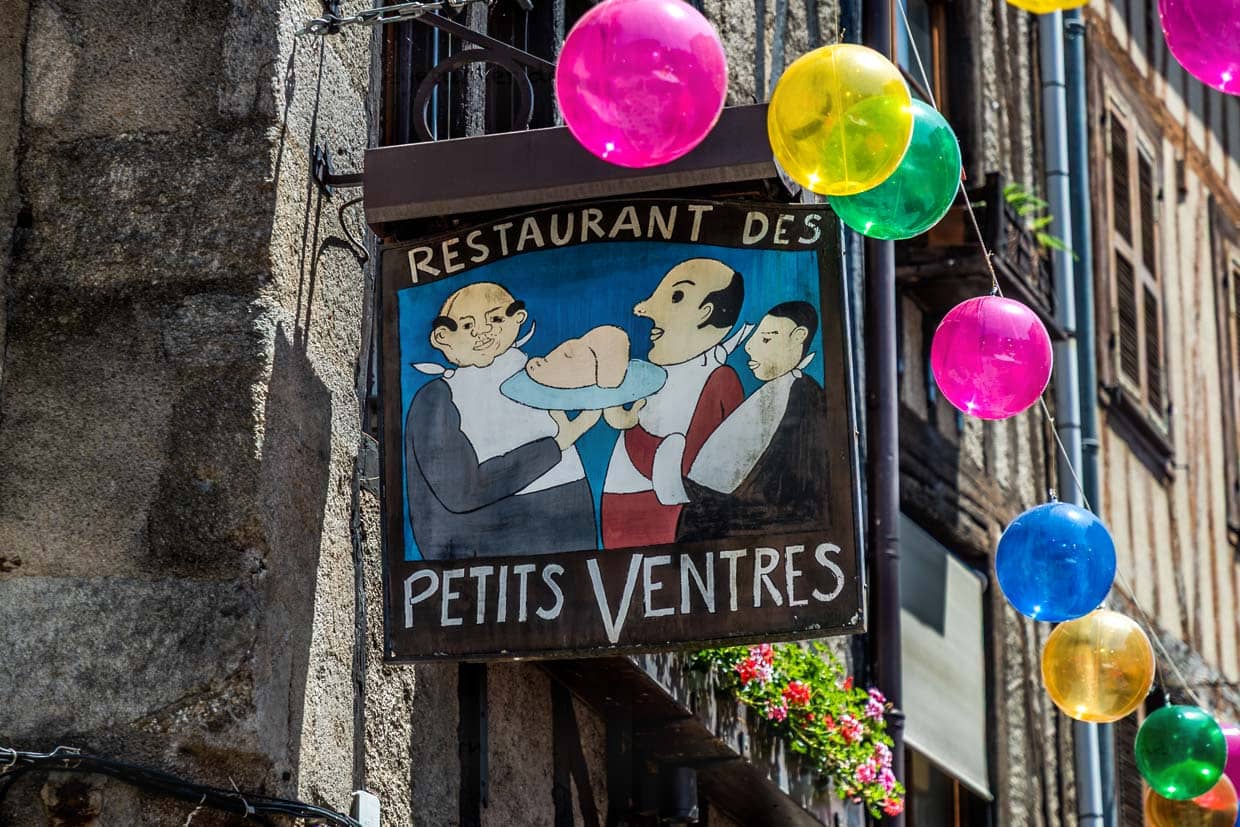
Whether park bench or baby Jesus – the porcelain tradition is everywhere in Limoges. At the tourist information office, you can obtain city maps for a tour on the subject of porcelain. If you want to delve deeper into history, visit the Musée National Adrien Dubouché. It houses the world’s largest porcelain collection and exhibits important works from the history of ceramics. The Four des Casseaux Kiln Museum is located on an original site of the porcelain industry. It is home to the monumental kiln that was the heart of Limoges porcelain production for over 50 years. It symbolizes the technical development, the craftsmanship and the economic importance of the industry. At the same time, the museum sheds light on the working conditions and everyday life of the people who worked in porcelain production.
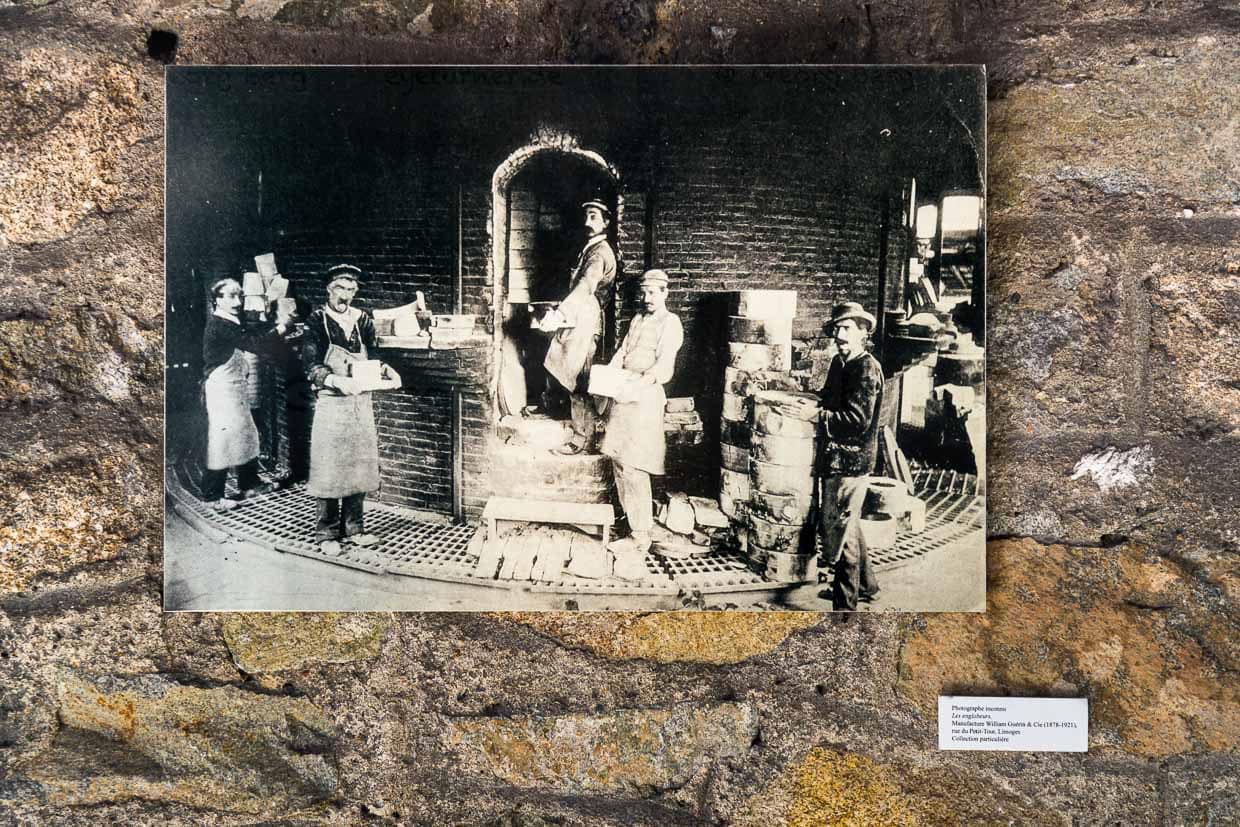
The artisanal steps of production can be experienced during guided tours of the art porcelain workshop Ateliers Arquié. If you are short on time or a museum lover, you should visit the authentic Four des Casseaux museum – it offers a compact, impressive insight into the porcelain history of Limoges.

Don’t miss Vienne, Gare and Cour!
The courtyard La Cour du Temple in the old town of Limoges has a special history as the central meeting point of the city’s old craft and business district. The courtyard is connected to the Rue du Consulat by a corridor and opens onto an impressive collection of granite and half-timbered houses with arcades and an elegant Renaissance staircase. Today there are small cafés and boutiques in the inner courtyard

The famous view of the Pont Saint-Étienne stone bridge over the River Vienne. The bridge dates back to the early 13th century and is one of the city’s most important medieval buildings. Saint-Étienne Cathedral, the Gothic episcopal church of the diocese of Limoges, sits on a plateau above the Vienne. Tip: the Museum Four des Casseaux is located close to the banks of the Vienne and at just the right height for this fantastic view!

A dream of a train station! Limoges-Bénédictins was built between 1924 and 1929 and inaugurated on July 2, 1929. It is considered one of the most beautiful station buildings in France. The building is characterized by a high dome with a diameter of 31 meters, a 67-meter-high bell tower and richly decorated Art Deco elements, including colorful stained glass windows by master glassblower Francis Chigot. Tours of the station are offered regularly.
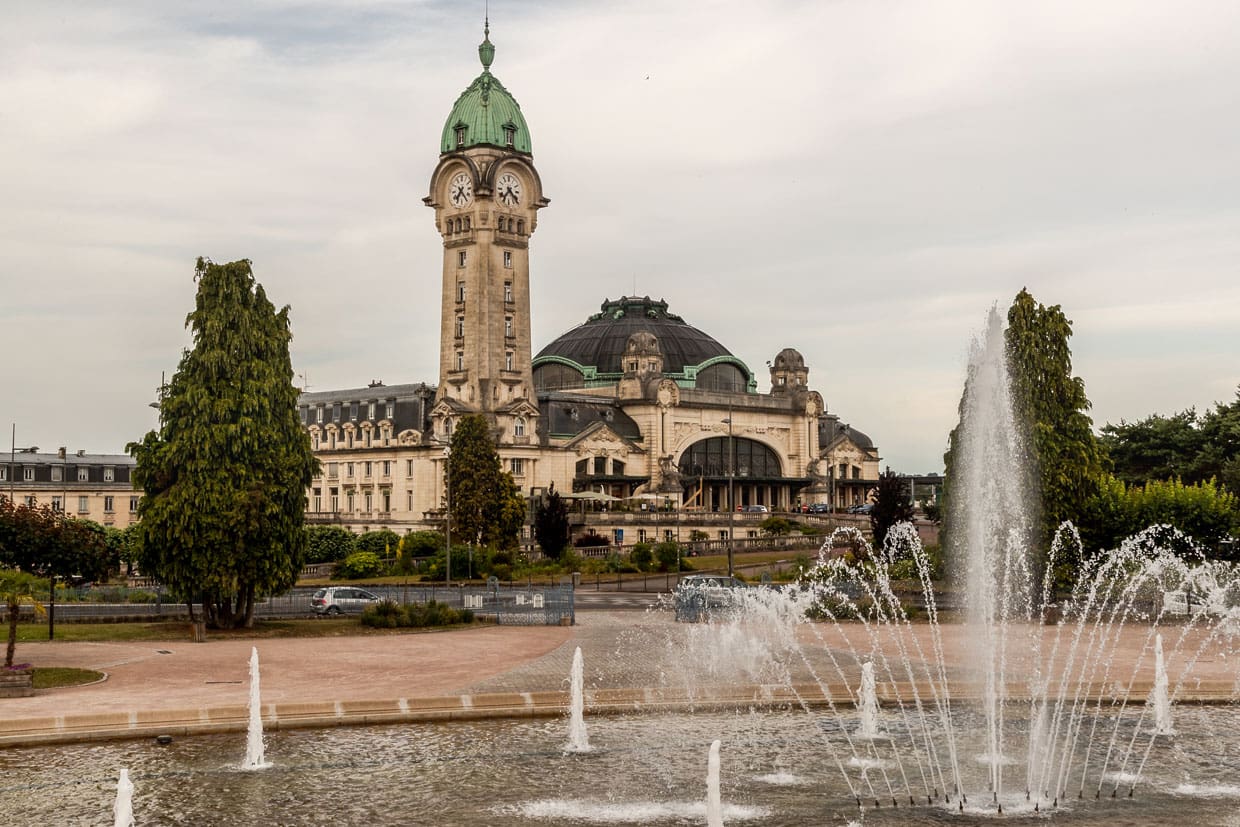
Highlights in Nouvelle-Aquitaine
The Charente winds its way through the French region of Nouvelle-Aquitaine for 380 kilometres. Its course leads from the mountainous headwaters over rolling hills and vineyards to the maritime floodplains at the estuary. From Angoulême, the French capital of comics, the river is navigable all the way to the Atlantic at Rochefort. It was once the main transport route for cognac production. Today, cognac houses and winegrowers invite you to take part in spirit tourism, while cycle paths such as the Flow Vélo take you past picturesque villages, old stone bridges, a rare floating ferry, water mills, castles and the historic centre of Angoulême. The Charente is still an insider tip, as it is one of the most unspoilt river landscapes in France: hardly any mass tourism, but plenty of nature, tranquillity and enjoyment. The small island of Aix was once a bulwark to protect the Charente estuary from enemy fleets and is now a popular destination for a day trip to the sea. There is also plenty to discover in Nouvelle-Aquitaine away from the Charente. For example, some skewered plate art made us think outside the box once again. The city of Poitiers, halfway between Paris and Bordeaux, was the centre of power in the Middle Ages and offers immersive cinema at the Futuroscope leisure park. The city of Limoges is famous for its French porcelain, and a tour of the city provides an insight into the art of porcelain making. There are also great museums dedicated to the history of porcelain art . The journey continues to the Creuse and Berry region. It is the home of the writer George Sand and the cradle of tapestry in France. In A Carpet for George Sand, the two themes are linked. The Cité internationale de la Tapisserie in Aubusson shows that carpets are not the dusty art of bygone days.
The research trip was supported by Nouvelle-Aquitaine Tourism and Limoges Tourism


